Karl H. Norris May 23rd, 1921 - July 17th 2019
Contribution by Woody Barton
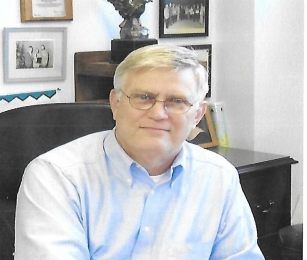
Woody Barton
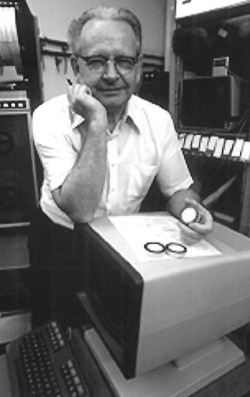
This tribute to Karl will truly be a test of memory. I began graduate studies more than 50 years ago and became aware of Karl Norris in the late 1960’s (Slide 2). My dissertation was a kinetic study of extra electron species and the analytical technique utilized NIR (SWNIR) and Least Squares statistical analysis. It was not quite equivalent since I was looking at the spectra of electronic transitions, not vibrational ones. The former being at least 10,000 times more intense, so very thin cells and pathlengths. The calculations were made by carrying boxes of 80- column cards to a building on campus and using an IBM 1620 which took up all of a 14’ X 14’ room. some references to Wilbur Kaye and Karl Norris that I was aware of at that time are provided (bottom of page). It was Tony Davies who made me aware of Herschel’s work some years later and he suggested the name Herschel region to SWNIR.
Karl Norris
The earliest photo I have of Karl from around 1968.
After graduation and active duty in the US Army I joined the U.S.D.A. Agricultural Research Service (ARS) in 1971. My job was to study the composition of forages to benefit ruminant nutrition and aid Agronomists and Animal Scientists. Around 1972 I was asked by my supervisor (and this is as close to a quote as I can remember) “do you know anything about NIR”? I said Yes and was sent to see Gerry Birth and Dick Leffler, Slide 4 and 5, four floors up in the Russell Research Center. We talked, and Gerry told me about his time in Karl’s laboratory. Shortly after that a visit to Beltsville was made and I met Karl, about the time the photograph in was taken. I got a Neotec FQA51A and began developing models for forage analysis. The FQA51A had enough of a spectrum to use chemometrics. It wasn’t as good as the Cary 14’s being used by Karl and Gerry, but a place to start. I then met John Shenk who was working at Penn State and had a Jobin-Yvon monochromator and small mini-computer and did the initial forage study with Karl. I also met Fred McClure at NC State Univ. who had built a system with a Cary 17 and Data General mini-computer.
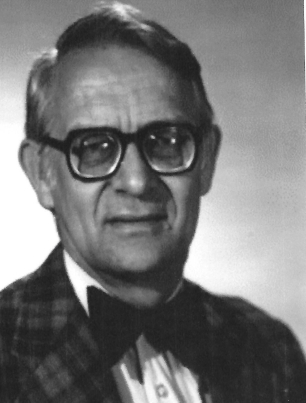
Gerry Birth
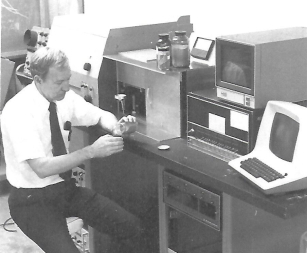
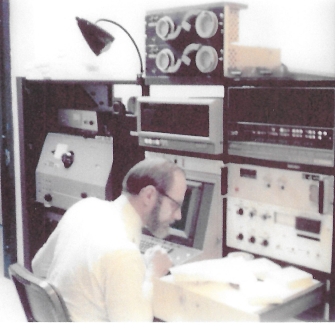
Dick Leffler
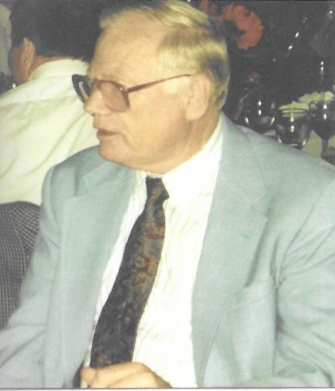
Fred McClure John H. Shenk
This group along with Wilda Martinez, ARS, National Program Staff, decided to form the National NIR Forage Research Program at six locations. State College, PA, with John Shenk and Mark Westerhaus where temperate grasses and haylage were studied, as well as software developed, was the first location. The second was the ARS laboratory of Karl Norris in Beltsville, MD, where the engineering expertise resided. The third location was the ARS laboratory in Athens, GA where Bob Windham and myself were located studying warm season forages and livestock systems. The fourth location was the ARS facility in El Reno, OK, where the Southwestern livestock systems and prairie grasses could be found. The fifth location was the ARS laboratory in Minneapolis-St. Paul, MN where temperate grasses and dairy cattle were the focus of research. The sixth location was the ARS laboratory in Logan, UT where Western grasses and livestock were the research focus. These six locations covered the breadth of the U.S.A. and the grasses prevalent in each area. Funding was obtained for six instruments . I do not have any photographs of the early computers. Prior to the DEC Vax 2000 we used DEC PDP 11-03’s, PDP 11-34 and VAX 11-750 in my laboratory. As they say the rest is history. This group stayed together for almost 20 years. We met and argued and made great strides. .
In one early meeting John Shenk wanted a name for the application of statistics to the NIR spectra. I said Bruce Kowalski had coined the term Chemometrics for the use of multivariate statistics to extract chemical information from spectra. I was nominated the group Chemometrician, a role I have tried to live down as I am still learning.
At another meeting Karl was showing spectra he obtained for oilseeds and noted that there was always a double peak at 1730 nm and 2315 nm. I offered that they were the symmetric and asymmetric C-H stretch of the combination and overtone of the fundamental bands from the mid-IR. I got the job of spectroscopist for that one.
We found out NIR analytical work was much better than our wet chemistry and it helped us reduce the errors of our wet chemistry methods and thus the NIR RMSEP. So, what did all this working closely together for so long give me from Karl? It gave me an appreciation for the need of protocols. This began when Karl and Wilda got me to be on the AOAC Editorial Board with the goal of undertaking collaborative studies to get “Official Method” status for NIR. This we did for Protein, ADF and Moisture, the later with Bob Windham as Associate Referee. Karl stressed the need for precise language and instructions and I found out that smart people can really mess up simple instructions. I had three pages of instructions on how to dry crucibles and get weights. We had to disqualify one laboratory for their innovative interpretation which put their error way outside the rest. I remember the famous talc experiment. Our task was to take the spectrum of a series of talc samples. The instructions were 15 pages in all. I was reminded of my 4th grade math teacher who wanted us to show all 14 steps of 6+4=10. Karl was meticulous and it has greatly benefitted me in how to generate data sets. The other thing I got from Karl was the desire to make models as simple as possible (preferably one term). We shared an understanding of “make the measurement at the best S/N you can and try to find those wavelengths that were selective for the analyte”. In my graduate work I could use a single wavelength and the molar absorptivity to calculate concentration. We will never get there for agricultural materials, but striving for it is a worthy goal. The culmination of the Network’s work was Handbook 643, in the late 1980’s it was the definitive work on Agricultural NIR, two editions and 14,000 copies: a well-received document.
There are two other aspects of Karl’s work which impacted my own. One was the quest for an immutable standard. The afore mentioned talc studies were one of those efforts, The use of rare earth oxides another. I tried to encase forage in a plastic. We tried to use styrene so that it would be in a hydrophobic medium, but the forage contained too many free radicals and styrene would not polymerize. We even got NIST to help and they could not get it to work. We could get it to polymerize in the same materials used for Electron Microscopy, but the plastic took in and released moisture to a greater extent than the forage. We are still looking for that immutable standard. The last item to mention is water. It is the one required assay for which there is a molecular weight and one that is so hard to do properly. The Rime of the Ancient Mariner was correct (whether Rhyme as in poem or Rime as in frost) water, water everywhere and no one measures it correctly!
Karl was a remarkable sounding board and when the group discussions got heated, he could always suggest an experiment to resolve the issue. Since I have already stated the length of some of Karl’s protocols it was in our best interests to resolve the issues without a lot of new work. There was a method in all those protocols. They made you think about each step and where error occurs. I truly miss those discussions. We say that a major part of IDRC is educational and I remember the zeroth IDRC in 1977 in Athens, GA. Gerry Birth and Karl got William H. Venable to attend and he presented the Misty Pickle Meter. Today it still is the best explanation of a complete study I have seen or read. I conclude with a summary of Karl’s achievements, at least the ones that I believe he would cite.
Karl, I hope you enjoy this.
Woody Barton
W. Herschel, Phil.Transactions of the Royal Soc. of London, 90, 255-283, (1800)
W. Herschel, Phil.Transactions of the Royal Soc. of London, 90, 284-292, (1800)
W. Herschel, Phil.Transactions of the Royal Soc. of London, 90, 293-331, (1800)
W. Kaye, Spectrochimica Acta, 6, 257=287, (1954)
W. Kaye, Spectrochimica Acta, 7,181-207, (1955)
W.C.C. Kaye and R.G. Devaney, J. Opt. Sci. Am. 41, 658-664 (1951)
K.H. Norris and W.L. Butler, IRE Trans biomed. Electron., 8, 153-157, (1951)
K. H. Norris, Trans. A.S.a.E., 7, 240-242 (1964)
Karl H. Norris: An interesting career
B.Sc. degree in Agricultural Engineering from Pennsylvania State University in 1942
Doctorate (honorary) from Wilson College, Chambersburg, PA in 2006
Early work with candling of eggs even caught the eye of President Dwight D. Eisenhower Moisture in soybeans and protein in wheat would serve as a model for all his subsequent work.
Worked with the National NIR Forage Network. (where I met Karl).
An abiding interest in developing medical applications for NIR Long relationship with NIST and metrology organizations worldwide on Standards for NIR.




